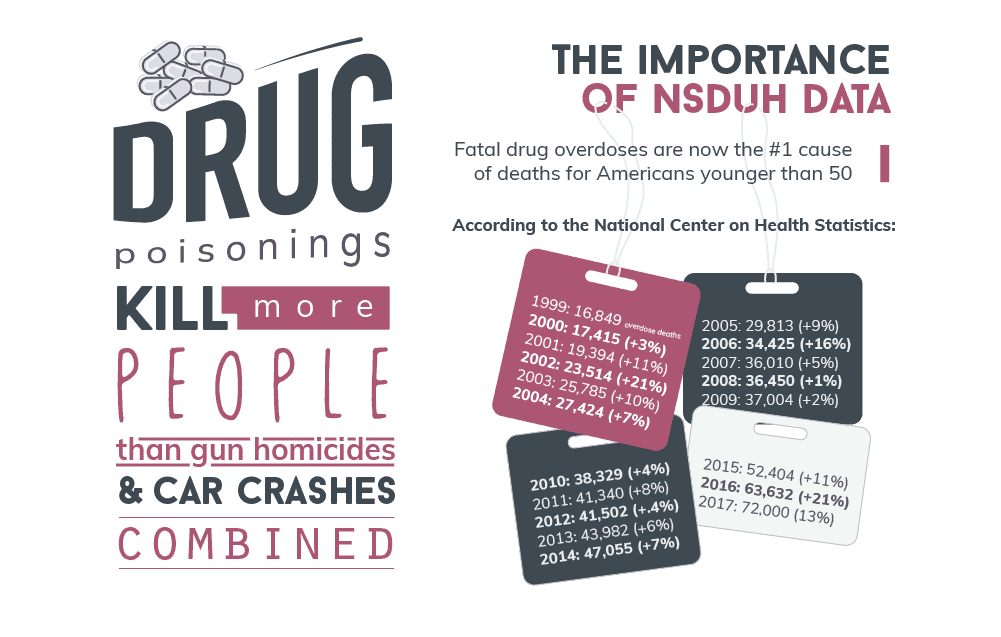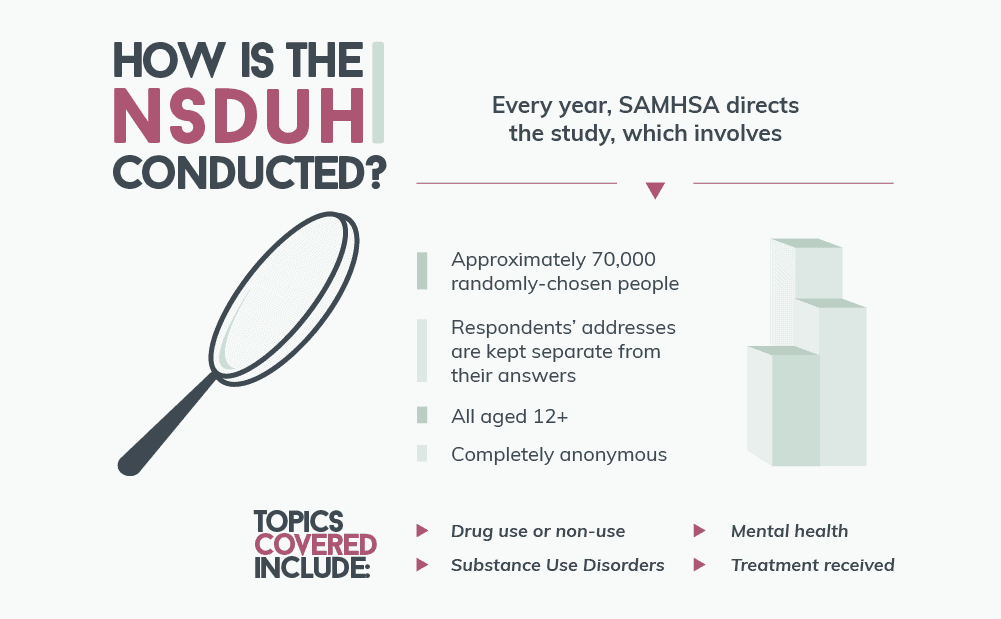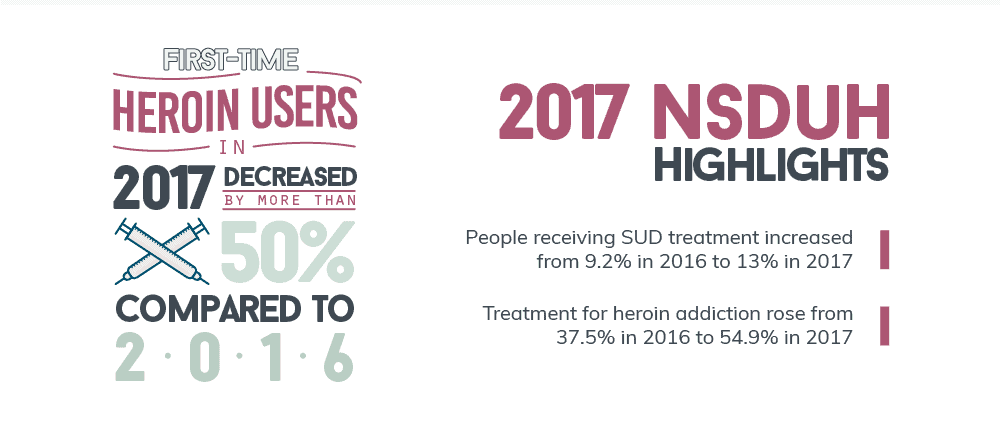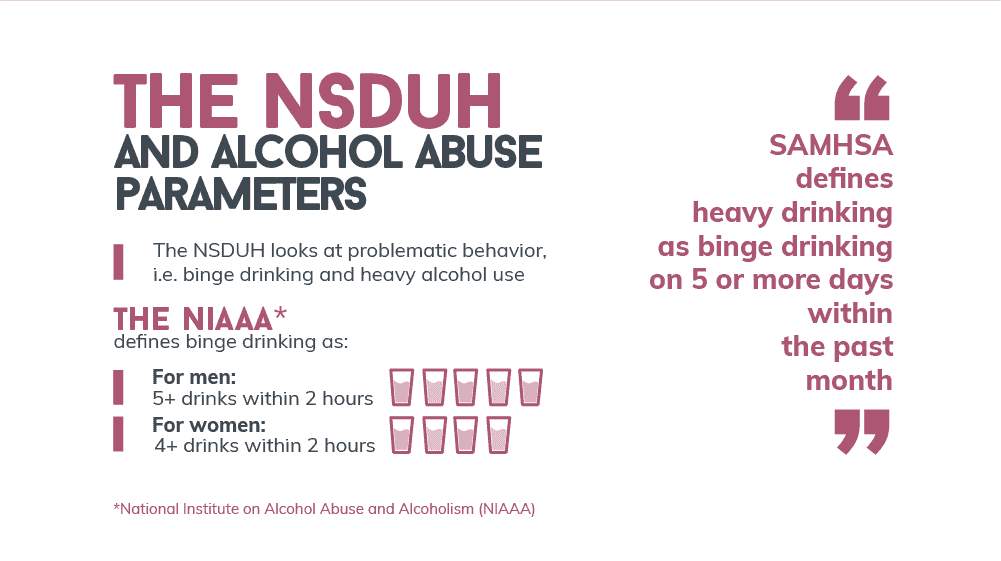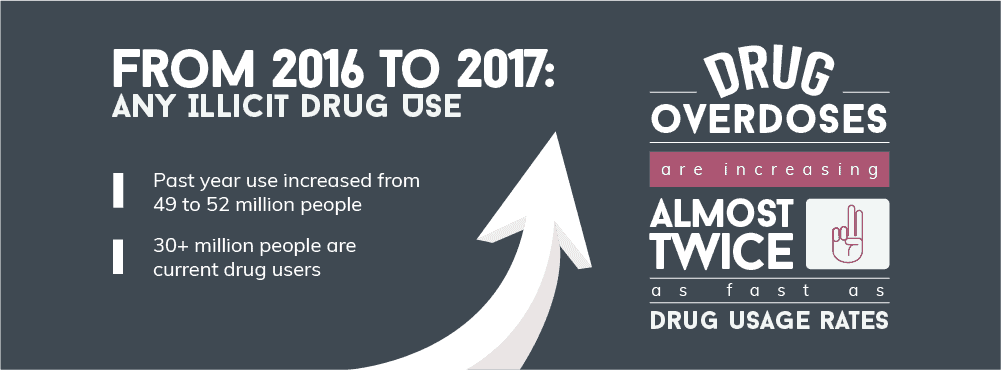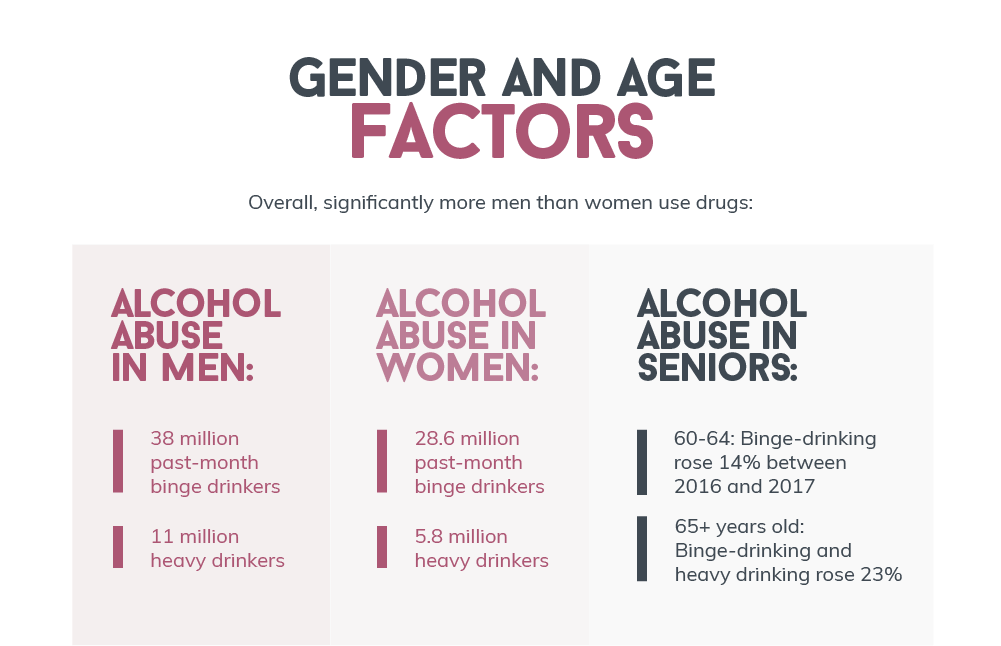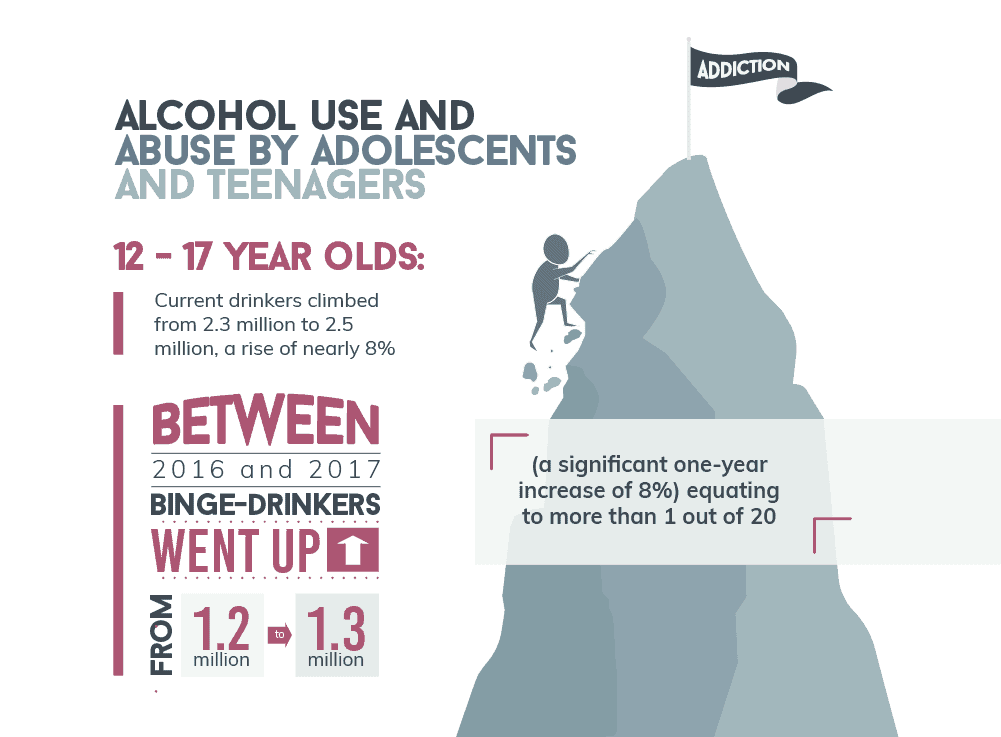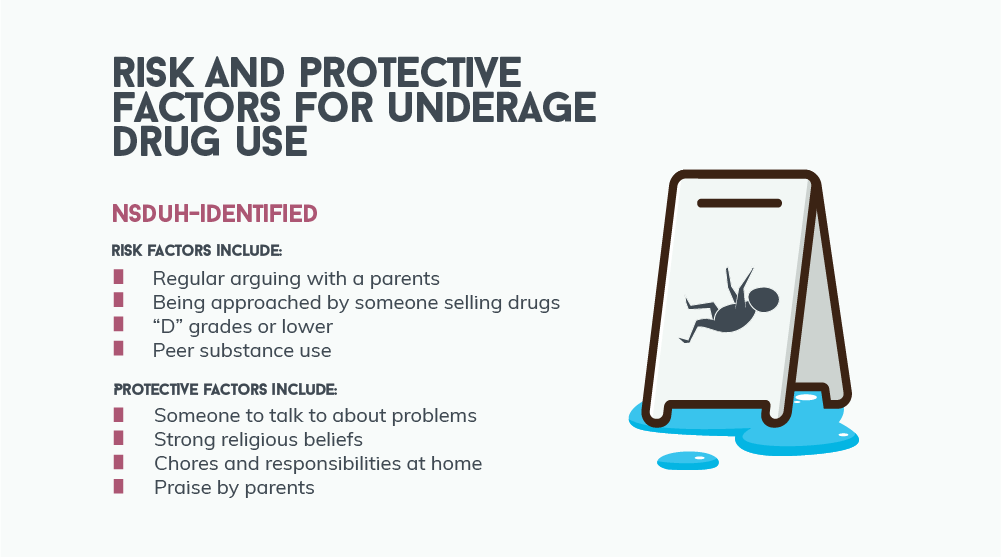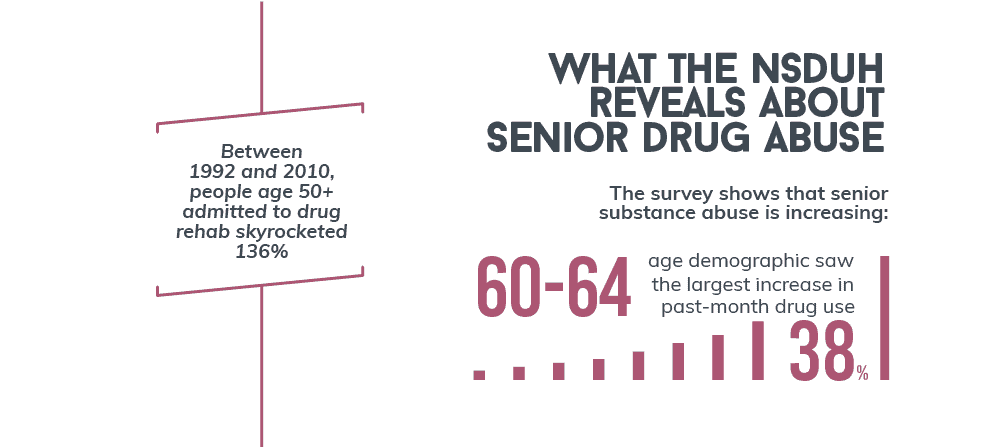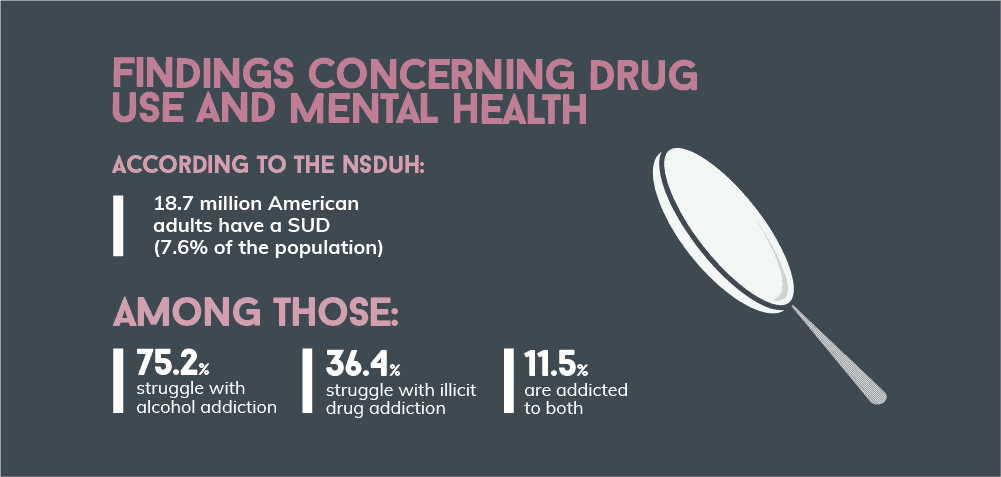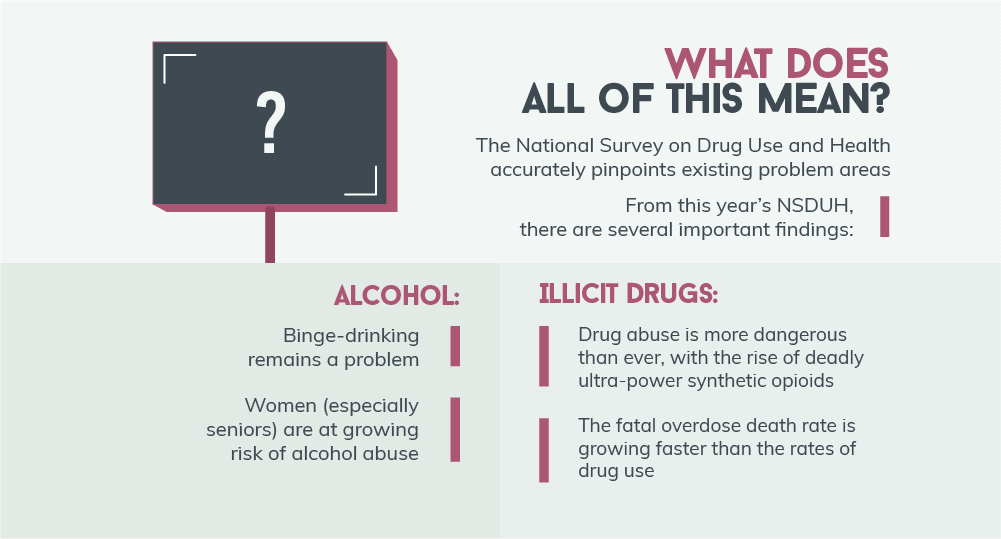“SAMHSA’s National Survey on Drug Use and Health contains annual data that provides critical information which helps us understand important concepts around mental health and substance misuse across the nation.” ~ Alex Azar, Department of Health and Human Services Secretary The ongoing drug epidemic has been called the worst public health crisis in American history. Overdose death rates continue to rise, killing a record number of people every year. But before an effective solution can be found, the problem must be clearly defined. This way, legislators, policymakers, the medical community, and addiction experts can focus their efforts whenever they are the most needed. This is the purpose of the 2017 National Survey on Drug Use and Health, which was just released this September.
“Get the help you need today. We offer outpatient assistance, so you can maintain your work, family, and life commitments while getting the help you deserve!”
What Is the National Survey on Drug Use and Health?
Conducted by the Substance Abuse and Mental Health Services Administration, the NSDUH provides accurate, up-to-date information on such health-related issues as drug, alcohol, and tobacco use in the United States. It also gives a clearer picture of the mental health of the U.S. population. Furthermore, the NSDUH can highlight changing trends over time. The survey was first conducted in 1971 and now involves nearly 70,000 interviewees across all 50 states and the District of Columbia. 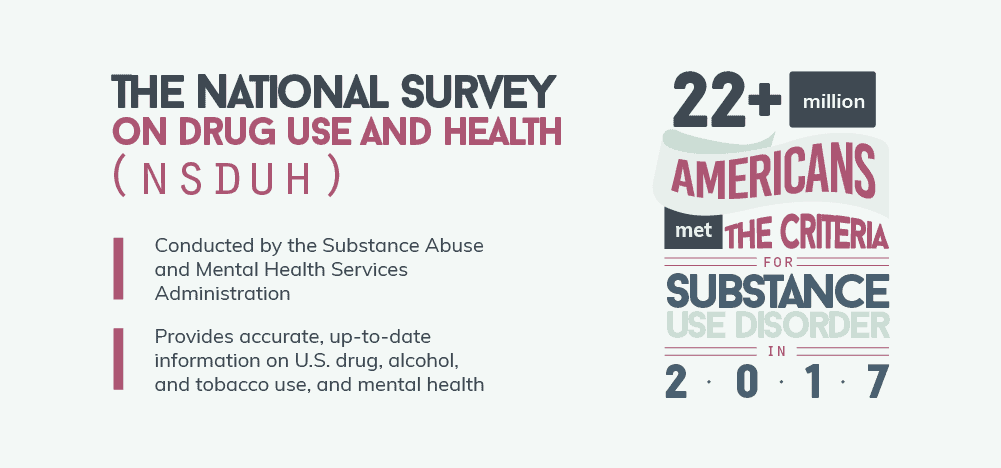 For example, according to the NSDUH, over 22 million Americans meet the criteria for some type of Substance Use Disorder in 2017, within 2% of 2016’s total. But within those statistics are the constantly-changing trends involving drugs and alcohol. Having the information to examine those nuances helps improve treatment.
For example, according to the NSDUH, over 22 million Americans meet the criteria for some type of Substance Use Disorder in 2017, within 2% of 2016’s total. But within those statistics are the constantly-changing trends involving drugs and alcohol. Having the information to examine those nuances helps improve treatment.
How Is the National Survey on Drug Use and Health Used?
The NSDUH gathers valuable information that can be used to:
- Support treatment and prevention programs
- Monitor trends in substance abuse
- Highlight the intersection of mental illness and substance abuse
- Provide context to data from other sources
- Estimate the overall public need for treatment
- Inform and shape public health policy
- Determine the allocation of resources
Why Is It So Important to Have this Information?
“The NSDUH data provide an essential roadmap for where we must focus our efforts. SAMHSA works daily to connect Americans living with these conditions with much-needed services and supports in their communities.” ~ Dr. Elinore F. McCance-Katz, MD, Ph.D., Assistant Secretary for Mental Health and Substance Use Currently, fatal drug overdoses are the #1 cause of deaths for Americans younger than 50. To put that in even greater perspective, drug poisonings kill more people than gun homicides and car crashes combined. And the numbers continue to get worse. According to the National Center on Health Statistics, the United States has experienced 19 straight years of tragic “records”:
- 1999: 16849 overdose deaths
- 2000: 17415 (+3%)
- 2001: 19394 (+11%)
- 2002: 23514 (+21%)
- 2003: 25785 (+10%)
- 2004: 27424 (+7%)
- 2005: 29813 (+9%)
- 2006: 34425 (+16%)
- 2007: 36010 (+5%)
- 2008: 36450 (+1%)
- 2009: 37004 (+2%)
- 2010: 38329 (+4%)
- 2011: 41340 (+8%)
- 2012: 41502 (+.4%)
- 2013: 43982 (+6%)
- 2014: 47055 (+7%)
- 2015: 52404 (+11%)
- 2016: 63632 (+21%)
- 2017: 72,000 (13%)
Compared to a generation ago, the total number of drug overdose fatalities has more than quadrupled. Because the drug abuse landscape in America continues to shift rapidly, timely information from the NSDUH is a critical resource for law enforcement agencies, recovery and prevention specialists, public policy decision-makers, and of course, anyone whose life has been affected by the disease of addiction.
How is the National Survey on Drug Use and Health Conducted?
Every year, SAMHSA directs the study, which involves approximately 70,000 randomly-chosen people aged 12 and up. The study is completely anonymous -names are not asked and respondents’ addresses are kept separate from their answers. While parents must sign consent forms for the adolescent or teenage children to participate, the child’s answers are not seen by their parents or their school. Among the topics covered are:
- Drug use or non-use
- Substance Use Disorders
- Knowledge and attitudes about drugs
- Mental health
- Treatment received
The survey is quite comprehensive – it includes households, college dormitories, homeless shelters, and even civilians who live on military bases. It does exclude active members of the military, long-term hospital residents, homeless people who are not in shelters, and the prison population. The survey also provides useful data on many different types of drugs, qualifying that usage as lifetime, past-year, and past month.
Highlights from the 2017 National Survey on Drug Use and Health
According to the NSDUH, there are some encouraging signs:
- The number of first-time heroin users in 2017 decreased by more than 50%, compared to 2016.
- The percentage of people who received SUD treatment increased significantly, from 9.2% in 2016 to 13% in 2017.
- This was especially the case for people who needed treatment for heroin addiction. Treatment rates rose from 37.5% in 2016 to 54.9% in 2017.
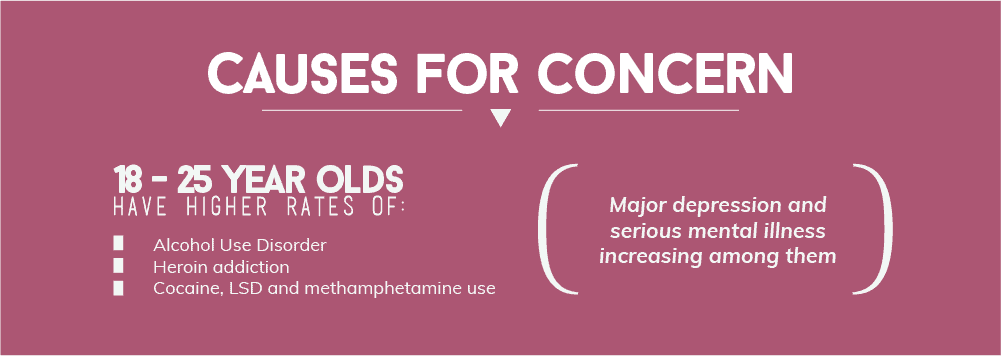 However, there are still several causes for concern, especially regarding young people and pregnant women:
However, there are still several causes for concern, especially regarding young people and pregnant women:
- Marijuana use among adolescents, teenagers, and young adults ages 12 to 25 is associated with major depression, heavy alcohol use, and opioid abuse.
- Compared to other age demographics, young adults aged 18 to 25 also have higher rates of:
- Alcohol initiation
- Alcohol Use Disorder
- Cigarette use
- Cocaine use
- Heroin addiction
- LSD use
- Methamphetamine use
- Comparing 2017 to 2016, young adults have higher rates of marijuana and methamphetamine use.
- The rate of major depression and serious mental illness is also increasing among young adults.
- Between 2015 and 2017, the rate of drug use among pregnant women is increasing, including for opioids, cocaine, and marijuana.
- 7% of pregnant women and admit to using marijuana within the past month.
- 3% of pregnant women report to daily use.
- Over 8% of interviewees self-report co-occurring SUD and mental illness.
The NSDUH and the Parameters of Alcohol Abuse
Unlike most of the other substances detailed on the NSDUH, alcohol is completely legal for people of age. Furthermore, responsible drinking is fully accepted in society. Because of this, the NSDUH now focuses less on mere alcohol use and instead asks interviewees about what could be viewed as problematic behaviors – binge drinking and heavy alcohol use. The National Institute on Alcohol Abuse and Alcoholism defines binge drinking like a man consuming 5 or more alcoholic drinks within two hours. Because women metabolize alcohol differently, their threshold is 4 or more drinks within two hours. SAMHSA defines heavy drinking as binge drinking on 5 or more days within the past month. Identifying these behaviors is important because such drinking habits place the individual had increased risk of developing an Alcohol Use Disorder. For men, low-risk drinking is consuming no more than 4 alcoholic drinks in a single day and no more than 14 drinks in a single week. For women, the limits are 3 daily drinks and 7 weekly drinks. Of special relevance, only 2% of people who are able to drink within these limits have AUD.
2016 to 2017, Alcohol Use and Abuse
81% of people age 12 and up have tried alcohol and 52% are current users. Between 2016 and 2017, the number of current drinkers increased from almost 137 million to close to 141 million, a jump of just under 3%. In 2017, 136,000 Americans tried alcohol for the first time, up from 126,000 new drinkers in 2016. 49% of those—66,000 people—were between the ages of 12 and 17. While that is not necessarily a problem, there is concern that the number of people who engage in risky drinking behaviors is increasing.
- In 2017, 66.6 million people binged on alcohol, up from 65.3 million in 2016.
- Although a 2% increase might seem small, it still means that over a million more people were high-risk drinkers.
- This represents almost 25% of the population.
- During the same time period, the number of people who drank heavily rose from 16.3 million to 16.7 million.
- Again, this seemingly-insignificant increase of 2.6% means around 400,000 more people binge-drank on multiple occasions.
- In both 2016 and 2017, about 6% of the population was made up of heavy drinkers.
Among young adults, there is very positive news. While the 18-to-25 age demographic is traditionally thought of as the one most likely to drink dangerously, the NSDUH revealed starting information:
- Binge alcohol use is down, dropping from 13.3 million people in 2016 to less than 12.7 million in 2017.
- This is a decrease of almost 5%.
- Heavy drinking is down as well, going from 3.5 million to 3.3 million.
- This is a drop of over 5%.
In 2017, approximately 14.5 million Americans abused or were dependent on alcohol. 73% of these – about 10.6 million people -were age 26 or older.
2016 to 2017, ANY Illicit Drug Use
Across the board, illicit drug use is increasing, lifetime, regular/past-year, and current/past-month.
- In 2017, nearly 135 million Americans age 12 or older had tried an illicit drug at some point, up from less than 131 million in 2016.
- This is roughly HALF of the population.
- That represents a 3% one-year increase.
- Past-year use in 2017 increased to almost 52 million, up from less than 49 million in 2016.
- This is an almost 7% increase.
- Over 30 million people are current drug users, up from less than 29 million in 2017.
- This is also an almost 7% increase.
There are two important takeaways from these statistics. FIRST, illicit drug use is going up despite public awareness and daily headlines about the drug crisis. SECOND, the rate of drug overdoses is increasing almost twice as fast as the drug usage rates. This points to the emergence of deadlier drugs. In 2017, 7.5 million Americans abused or were dependent on illicit drugs or misused prescription medications.
Marijuana Use
Marijuana use is also on the rise. In 2017, 3 million people tried marijuana for the first time, up significantly over 2016’s total of 2.6 million initiates. 83% of those—2.5 million people—were 25 years old or younger. Between 2016 and 2017:
- The number of people admitting to lifetime use increased from less than 119 million to almost 123 million.
- 45% of the population has tried marijuana, making it the most-used illicit drug.
- This is close to a 4% increase.
- Just under 41 million people used marijuana in 2017, compared to less than 38 million in 2016.
- Approximately 26 million people are current marijuana users, up from 24 million.
- That is a single-year increase of over 8%.
Growing legalization efforts are responsible for these increases, but they also ignore the many health risks associated with marijuana use. In 2017, just over four million people met the criteria for a Cannabis Use Disorder, up slightly from 2016. 43% of these – about 1.8 million people -were between the ages of 18 and 25.
Cocaine Use
In 2017, just over 1 million people tried cocaine for the first time, down about 50,000 from the year before. 70% of the – 729,000 people – were between the ages of 12 and 25. Although the number of people who have ever tried cocaine increased relatively slightly, there was a significant spike in the number of regular and current cocaine users.
- In 2016, there were just under 39 million people who had tried cocaine at some point in their lifetime. By 2017, the number had risen to 40.5 million people.
- As of 2017, that equates to approximately 15% of the population.
- Year-over-year, that is a 4% increase.
- Past-year cocaine use saw a major jump, going from just over 5 million users to just under 6 million.
- That is a 20% increase.
- There are 2.2 million current cocaine users, up from 1.9 million the previous year.
- That is a 16% one-year increase.
- Of special relevance, increases were seen in both powdered and smokeable “crack” cocaine.
Right now, Colombian production is an all-time high, meaning cocaine is a bigger drug threat in the United States than it has been in over a decade. In 2017, 966,000 Americans had a Cocaine Use Disorder, up more than 11% over 2016’s total. Of these, 64% –about 623,000 people -were age 26 or older.
Hallucinogen Use
In 2017, 1.2 million Americans tried a hallucinogenic drug for the first time. This is about 15,000 more drop from 2016’s total. 57% of those –683,000 people were between the ages of 18 and 25. This class of drugs includes LSD, Ecstasy, and PCP. Surprisingly, while both LSD and PCP saw increases, the number of current Ecstasy users went down.
- Lifetime use of hallucinogens went from 41.5 million to 42 million.
- This is a small 1% increase, overall.
- Total past-year hallucinogen use rose by 4.5% between 2016 and 2017.
- Right now, there are 1.4 million current hallucinogen users, a 3.5% increase.
- However, current LSD use jumped by 37% and current PCP use skyrocketed by over 76%.
- Meanwhile, ecstasy use decreased by over 5%.
These hallucinogens—especially Ecstasy—are popular “party drugs” used by the rave culture that frequents nightclubs, discos, and music festivals. In 2017, 316,000 Americans abused or were dependent on hallucinogens, an 8% decrease from 2016. 54% – about 171,000 people -were between the ages of 18 and 25
Inhalant Use
In 2017, 575,000 Americans tried in the works for the first time, up more than 9% over 2016’s total of 526,000 new users. Of these, more than half –289,000 people -were under the age of 18. Because the substances used as inhalants are commonly found around the house—cleaners, glues, paint thinners, gasoline, etc. – they are often abused by adolescents and teenagers. The bad news is that the number of people who have misused inhalants at some point is increasing. But there is good news – there were fewer current inhalants users in 2017 than there were in 2016.
- In 2017, there were 25.2 million Americans who had tried inhalants at some point, up from 24.4 million in 2016.
- This represents just over 9% of the population.
- Past-year use rose slightly, increasing by 99,000 users.
- On the plus side, current inhalant use dropped by over 5%.
Unfortunately, however, the use of inhalants is increasing in all categories among the 12-to-17 age demographic. In 2017, 98,000 Americans abused or were dependent on inhalants, down 11% from 2016. Of these, 55% –about 54,000 youths -were younger than 18.
Methamphetamine Use
In 2017, 195,000 Americans tried methamphetamine for the first time, up slightly from 2016’s total of 192,000 new users. Of these, 49% – 95,000 people -were between the ages of 18 and 25. Even though it never really went away, methamphetamine has made a remarkable comeback. Although domestic production is drastically down, Mexican cartels are flooding the United States with pure, potent, and cheap crystal meth. 45% of law enforcement agencies in the country say that meth is “highly available” in their area.
- In 2016, there were 14.5 million people who had tried meth at some point, but by 2017, that number had grown slightly, to 14.7 million.
- The number of past-year users jumped by 17%.
- There are 774,000 methamphetamine users, up 16% from 2016.
According to the 2017 national drug threat assessment, almost 30% of law enforcement agencies consider methamphetamine and to be the biggest drug threat in America. In 2017, 964,000 Americans had a Methamphetamine Use Disorder, 41% higher than 2016’s total. 56% of them are age 26 or older. This equates to 539,000 people.
Prescription Drug Abuse
Prescription drug misuse was first added to the NSDUH in 2016, and the good news is that for the most part, the misuse of psychotherapeutic drugs is down. This class of drugs includes:
- Opioid painkillers: The number of both past-year and past-month users is down, 4% and 3%, respectively.
- Right now, there are just over 3.2 million current painkiller abusers.
- Tranquilizers: Past-year and past-month use are down, 2% and 12%.
- Right now, there are 1.7 million current tranquilizer abusers.
- Sedatives: There are significant decreases in both past-year and past-month use, 12% and 30%.
- Right now, there are 352,000 current sedative abusers.
- Stimulants: Unfortunately, the abuse of these prescription ADHD drugs is on the rise. Past-year use is up over 3%, and past-month misuse has increased by 6%.
- Currently, there are 1.8 million people who abuse prescription stimulants.
ADHD medications like Ritalin and Adderall are most-commonly-abused by high school and college students who take them for supposed cognitive and study benefits. In 2017, there were fewer new misusers of prescription medications than the year before for most classes of drugs:
- Opioid pain relievers – 2 million new abusers, down 6% from 2016.
- 62% of these—1.2 million people—were age 26 or older.
- Stimulants -1.2 million new abusers, down 13% from 2016.
- 48% of these—581,000 people—were between the ages of 18 and 25.
- Sedatives – 271,000 new abusers, down 8% from 2016.
- 69% of these—186,000 people—were age 26 or older.
- Tranquilizers – 1.45 million new abusers, up 5% over 2016.
- 52% of these—749,000 people—were age 26 or older.
In 2017, 2.5 million people had a disorder involving prescription drug misuse, about 11,000 fewer than the year before. The breakdown was as follows:
- Painkillers: 1.7 million (-4%), 74% age 26+
- Tranquilizers: 739,000 (+20%), 51% age 26+
- Stimulants: 572,000 (+6%), 55% age 26+
- Sedatives: 198,000 (-3%), 83% age 26+
Heroin Abuse
There is some good news on this front—in 2017, 81,000 Americans tried heroin for the first time. This is a 40% drop from 2016’s 170,000 new initiates. 57% of those –46,000 people -were young adults between the ages of 18 and 25. Heroin is considered to be the most addictive drug on the planet, and this is evident in the NSDUH.
- In 2016, 5 million people reported lifetime use of heroin. By 2017, the number had risen to 5.3 million.
- This is a 6% increase.
- This represents nearly 2% of the population.
- Past-year use decreased by almost 7%.
- Unfortunately, however, past-month heroin use rose by 4%.
- Right now, there are almost half a million Americans who are regular heroin users.
80% of heroin users started out by abusing prescription medications. According to the 2017 National Drug Threat Assessment, 45% of law enforcement agencies consider heroin to be the top drug threat in the country. In 2017, 652,000 Americans had a Heroin Use Disorder, up 4% from the previous year. 73% of these are age 26 or older.
Gender and Age Play a Role
The NSDUH reveals the difference between men and women in terms of substance use. In almost every age group, more men than women use drugs, and the disparity is significant.
- 12-17: Girls beat boys by 2%.
- This is the only instance where women use more than men.
- 18-25: 31% more men than women take drugs.
- 26 and over: Men, by 61%.
- The gap is also widening. In 2016, 42% more men than women used drugs, but by 2017, it had reached 47%.
This story is slightly different in terms of alcohol use and abuse. Men:
- 73.2 million current alcohol users, up just 1% from 2016.
- 38 million past-month binge drinkers, an increase of less than 1%.
- 11 million heavy drinkers, about half a percent greater than 2016’s total.
Women:
- 67.4 million current alcohol users, up about 4.5% from 2016.
- 28.6 million past-month binge drinkers, an increase of 3.8%.
- 5.8 million heavy drinkers, an increase of 6.6%.
Overall, about close to 1 in 3 men and 1 in 5 women have engaged in risky drinking behaviors within the past month. So, while there are significantly more men than women who both use and abuse alcohol, that gender gap is rapidly narrowing. One more surprising revelations from the NSDUH is the sharp increase in alcohol abuse by senior citizens:
- 60-64: Binge-drinking jumped 14% between 2016 and 2017, and heavy drinking spiked by over 15%.
- Roughly 1 out of every 5 people in this age bracket abuses alcohol.
- 65 and older: Binge-drinking and heavy drinking shot up 23%.
- 1 out of every 8 senior citizens drinks and dangerously.
- Right now, there are close to 10 million Americans age 60 and older who currently engage in dangerous drinking behaviors.
This is important because older drinkers are more likely to take medications that may dangerously interact with alcohol, such as opioid painkillers and benzodiazepine tranquilizers. This increases the risk of overdose or serious injury. In addition, a 2015 study determined that even moderate drinking damages the heart of elderly people. Senior women are at particular risk.
“We treat both addiction and co-occurring disorders and accept many health insurance plans. Take a look at our outpatient program today!”
Alcohol Use and Abuse by Adolescents and Teenagers
For young people between the ages of 12 and 17, the news is both good and bad:
- 6.8 million children have tried alcohol at some point.
- This is over 27% of the population.
- The number of current drinkers climbed from 2.3 million to 2.5 million, an increase of close to 8%.
- This represents approximately 10% of that age group’s population.
- Between 2016 and 2017, the number of binge-drinkers went up from 1.2 million to 1.3 million.
- This is a significant one-year increase of 8%.
- That equates to greater than 1 out of 20 children within that age range.
- But at the same time, the number of adolescents and teenagers who drank heavily decreased by 9%, dropping from 191,000 to 174,000.
When broken down by age even further, there are real reasons for concern about underage drinking:
- Among 12-to-13-year-olds, the number of children who binge-drank within the past month almost doubled between 2016 and 2017-skyrocketing by 96%.
- Surprisingly, the number of heavy drinkers went down.
- On a positive note, among 14-to-15-year-olds, the number of binge drinkers decreased, and the total number of heavy drinkers dropped by 53%.
- But among 1-to-17-year-olds, both binge and heavy drinking have increased.
- Within this age bracket, there are 941,000 teens who binge-drank within the past month, a one-year jump of nearly 9%.
- This is about 1 out of every 11 16- and 17-year-olds.
Drug Use by Adolescents and Teenagers
When the NSDUH breaks a drug use down by age, the results are revealing, and in some cases, distressing. Among American youth between the ages of 12 and 17.
- 11% have tried cigarettes, and 3% are current smokers.
- 24% have used illicit drugs, and 8% are current users.
- That equates to two million current underage drug users.
- In fact, within the past month:
- 1.6 million adolescents and teens have used marijuana.
- 364,000 have misused prescription drugs.
- 214,000 have abused opioid painkillers.
- 153,000 have used inhalants.
- 143,000 have used hallucinogens.
- 128,000 have misused prescription tranquilizers.
- 123,000 have misused prescription stimulants.
- 53,000 have used LSD.
- 41,000 have used Ecstasy.
- 26,000 have used cocaine.
- 19,000 have misused prescription sedatives.
- 16,000 have used methamphetamine.
- 5000 have used PCP.
- 2000 have used heroin.
And as worrisome as those statistics are, the NSDUH uncovered information that may be even more concerning—the use of marijuana, alcohol, LSD, Ecstasy, inhalants, methamphetamine, tranquilizers, and stimulants are all on the rise among American youth. This is extremely significant because the human brain continues to mature until the mid-twenties. This means that the underdeveloped teenage brain is particularly vulnerable to the adverse and addictive effects of these drugs.
Risk and Protective Factors for Underage Drug Use
One of the most useful things that the NSDUH does is identify the possible risk and protective factors shared by many adolescents and teenagers that may play a role in their use of alcohol and/or drugs. Risk factors include:
- Arguing with a parent 10 or more times in a year
- Being approached by someone selling drugs
- Nonparticipation in school activities
- “D” grades or lower
- Peer substance use
Protective factors include:
- Someone to talk to about problems
- Attendance at 25 or more religious services in a year
- Strong religious beliefs
- Religious peers
- Chores and responsibilities at home
- Limited TV time
- Praise by parents
- Participation in extracurricular activities
- Prevention messages at school
- Enjoyment of school
- Praise from teachers
- Parental attention and involvement regarding homework
- Limited social time on school nights
What the NSDUH Reveals About Senior Drug Abuse
Surprisingly, the survey shows that substance abuse is becoming increasingly common within the older community. In fact, the 60-64 age demographic saw the largest increase in past-month drug use—38%. Right now, there are over 10 million current drug users over the age of 40. As an example, looking again at older age groups and how their past-month drug used changed from 2016 to 2017: 60-64:
- Marijuana: +48%
- Painkillers: +17%
- All opioids: +17%
65 and older:
- Marijuana: +6%
- Cocaine: +118%
- Painkillers: +35%
- All opioids: +34%
Because seniors are more likely to be in chronic pain than other age groups, they are also more likely to be prescribed – and often overprescribed -opioid painkillers. As a result, SAMHSA reports that between 1992 and 2010, the number of people age 50 and over and who were admitted to the drug rehab program skyrocketed 136%. And between 1999 and 2014:
- The number of opioid-related deaths among the 55-64 age demographic skyrocketed from 226 to 7486 – an increase of more than 3300%!
- The 65-74 age demographic saw a 4150% increase.
- Opioid overdoses among senior men jumped by 775%
- Among senior women, the increase was 1682%
Findings Concerning Drug Use AND Mental Health
According to the NSDUH:
- 18.7 million American adults have a SUD.
- That represents 7.6% of the population.
- Among those:
- 75.2% struggle with alcohol addiction
- 36.4% struggle with illicit drug addiction
- 11.5% are addicted to both
- 46.6 million American adults have a mental illness.
- That represents 18.9% of the population.
- Among those, 24% have a serious mental condition.
- 8.5 million adults battle co-occurring addiction and mental illness.
- That represents 3.4% of the population.
- Compared to people without mental illness, individuals with mental disorders and are more likely to binge drink, abuse illicit opioids, misuse pain relievers, and use marijuana, illicit drugs, or cigarettes.
“We accept many health insurance plans. You can get your life back in order with our outpatient program today!”
What Does All of This Mean?
The best thing about the National Survey on Drug Use and Health is how it pinpoints where the existing problem areas are—breaking down which demographic is using what drug. Armed with this information families can better watch out for issues that their own loved ones may be struggling with. From this year’s NSDUH, there are several important takeaways: Alcohol:
- Dangerous binge-drinking remains a problem.
- Women and especially seniors are at growing risk of alcohol abuse.
Illicit Drugs:
- Drug abuse is more dangerous than ever—with the emergence of deadly new, ultra-power synthetic opioids, the fatal overdose death rate is growing faster than the rates of drug use.
Marijuana:
- As legalization in more states is increasing the availability of marijuana, more people are becoming addicted. Young adults are at the greatest risk.
Cocaine:
- Because of increased production, cocaine is highly-available in the United States. This has resulted in double-digit percentage increases in the number of users and addicts.
Hallucinogens:
- The use of LSD and PCP is skyrocketing. Young adults are at the most risk.
Inhalants:
- Initiation of inhalant experimentation and use continues to rise. People under the age of 18 are especially vulnerable.
Methamphetamine:
- Meth has made a killer comeback. The number of current users has risen by double digits, resulting in addiction rates higher than any other drug.
Painkillers:
- Use and addiction numbers aren’t growing as fast as they once did, but millions of Americans are still affected.
Tranquilizers:
- The number of new abusers is increasing, leading to rates of addiction that are climbing faster than for any other prescription drug.
Stimulants:
- The number of stimulant addicts is growing, especially among young adults.
Sedatives:
- While growth rates of abuse and addiction are slowing, adults over the age of 26 are most at-risk.
Heroin:
- The number of heroin abusers and addicts continues to grow, and heroin remains the country’s greatest drug threat.
Men:
- While the number of men who abuse alcohol is leveling out, more men are using illicit drugs.
Women:
- Binge and heavy drinking have become a significant problem, as well as drug use during pregnancy.
Seniors:
- Drug and alcohol abuse among the elderly is growing faster than for any other age group. This presents an increased danger of serious adverse drug interactions.
Youth:
- Binge-drinking among young teenagers has ballooned.
While trends cannot predict what happens on an individual level, they can keep you aware of what specific challenges and temptations your loved ones may be facing. With this knowledge, you can hold appropriate family discussions, watch out for red flags and warning signs, and get the specialized help you need if problems do arise.
What Did you Think About This Blog?
Give it a Rating!

